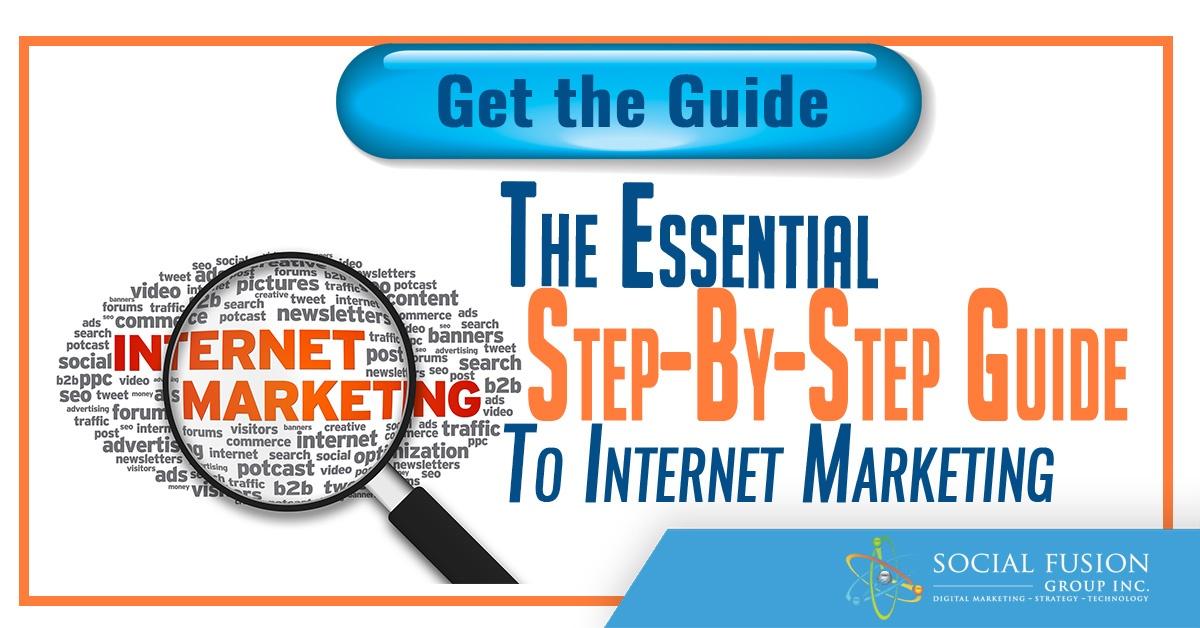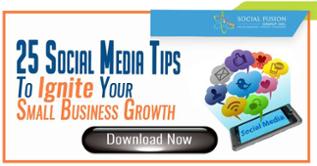This article has been updated for 2019
Following up on our previous article "6 Types Paid Advertising You Can Leverage for Your Next Campaign", many of you wrote back, asking us to elaborate on the topic of Native Advertising.
Therefore, in this article we will be focusing on what native ads are, review some examples and share some useful tips you can implement in your native ad strategy.
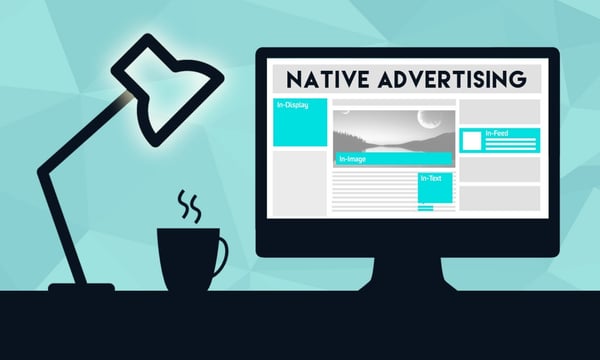
Before diving right in, let’s briefly define what native advertising is. Native ads are a type of paid advertising that promotes a sponsor's content to an influencer's audience in a non-disruptive manner. Examples include sponsored blog posts, promoted tweets, and sponsored emails.
What Is The Main Benefit Of Native Advertising?
Native ads can provide significant benefit for most content marketing campaigns. Let's highlight some of that:
- They easily capture consumer attention
- They can tap into an influencer’s or blogger’s audience thus increasing your visibility and potential lead gen
- They are very mobile friendly
- They can be shareable
- They can help you build your thought leadership
- They are very flexible in terms of style (especially when compared to other banner ads)
- They have the ability to leverage multiple networks such as websites and blogs, social media platforms, email etc.
- If planned and executed properly, they have very high ROI potential
One Misconception
One common misconception is that native advertising is only for billion dollar businesses. While they do use them, it is not exclusive to them.
Let’s look at one example. Below you can see how CapitalOne is using native advertising on the Forbes network to not only enhance what the audience of Forbes are seeing, but also build their brands awareness and visibility.
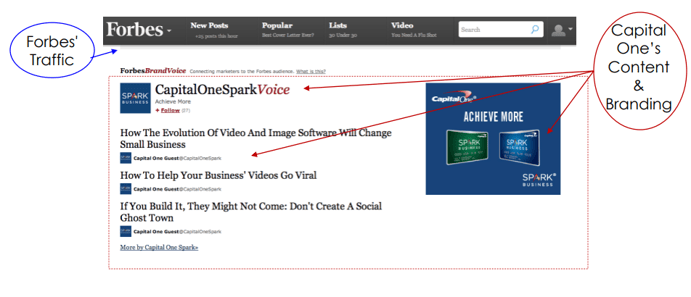
Now you might be thinking, “Forbes and CapitalOne are massive companies with marketing campaigns backed by many hundreds of thousands, or even millions of dollars. There is no way a small business could do something like that.” That's where you're wrong...
Many smaller companies are turning to “micro-influencers” with the ability to host native ads for others. Why? Actually, it's all about engagement. While many "influencers" have massive audiences, their engagement rates are low. Micro-influencers have more modest audience sizes but have significantly higher engagement rates. Ultimately, content marketing is about generating measurable engagement; which opens the door for native advertisers to connect with significant engagement regardless of company size.
Tips for a Native Ad Strategy
There are a variety of tips and tactics to consider. Perhaps the most important tip we could share with you is to be creative. You need to have the ability to come up with your own messaging, sharing of insight, and understanding of what it is the audience that you are getting in front of actually want .
One very important thing to remember here is that you are NOT trying to sell to the audience here. Instead, you are looking to connect with them in the manner they expect to be connected with.
So if they are expecting to read about data driven insights, then you are providing data driven insights. If they are expecting to hear the joke of the day, you are providing the joke of the day. Always have what they value in mind.
Let's take a look at a couple of campaigns and their related strategies to highlight this further.
Successful Native Advertising Campaigns:
Airbnb and the New York Times
When you think of Airbnb, you may think of travel and hospitality. In this example, they are leveraging the NY Times' audience to get their brand in front of them. What's the creative hook? An interactive post for the Times that was interactive and referenced Ellis Island.
So thinking logically here, does Ellis Island fit with creative and value? We believe so.
With the New York Times being a New York entity, most New Yorkers can identify with Ellis Island. Furthermore, what do you see in the native ad? They are including images, videos, interactive content, all of which are extremely engaging to the reader. ...and its not engaging as an ad, but as a source of valuable content. Of course there has to be a business benefit for providing all of that value and at the end of the post, they have a nicely integrated CTA that pushes back to their home page for anyone interested.
This is a very intelligent way to get in front of a very well educated audience.

Image Source: AdEspresso
YouTube and Their Influencers
Shifting from the “old media” to the “new media,” another good campaign is highlighted through YouTube trying to drum up interest in their new e-commerce integrations. So what did they do? They used their own internal influencers and leveraged their top talent in the gadget and fashion world and essentially curated a celebration of unboxing and product demos, to show how you can now leverage the platform and e-commerce integrations for your product.
But why would anyone do something like this? The short answer
These influencers are bringing in their own audience and their own engagement. So if you want to get in front of an audience that has a fairly aligned need with what you are offering, you can pay these influencers to get you in front of that audience quickly.
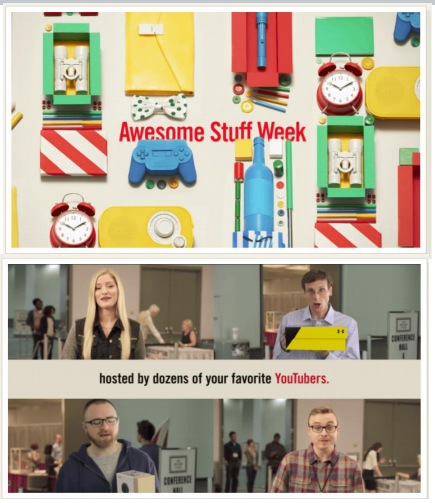
Image Source: AdEspresso
Brands on Instagram
Apart from video and print, you can also leverage the power of Instagram. Instagram has been driving a tremendous amount of influencer opportunities, and this is where the sponsored ads go from big brands, all the way down to the smaller players too.
Again, native advertisements are not selling anything. This can be further emphasized by the three examples below. Notice how they are providing value (in this context it would be a great image along with the concise text), without selling anything to anyone.
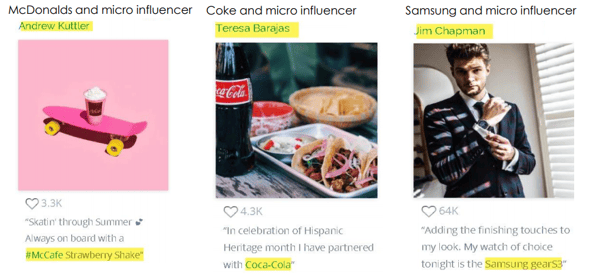
Image Source: Klear
Building a Native Ads Strategy
Let’s focus on tips that can help you build YOUR native ads strategy.
Tip 1 – Use Data
The biggest tip here would be to understand the data of the site with which you want to work with. This includes:
- Understanding the types of posts that are most successful on the site
- The kind of engagement the site gets
- How many clicks the average posts gets
Once you have this information, it can then help you build out your ROI, and more importantly, it allows you to build out your flow and how you want to move people down your funnel.
Tip 2 – Be Creative
We touched upon this a bit earlier. Remember we are not going to overtly sell to our audience so we need to be creative. Such an example are the posts like the Airbnb example.
Remember, there are multiple types of native ads. You can use promoted listings, sponsored blog posts, emails etc.
Tip 3 – Match the Style of the Publisher’s Content
This is very important. You should always try to match your ads aesthetics to those of the website your ads will be hosted on. Remember to use the language they write in. A fine example of these two was the Airbnb example we saw earlier. Also, if you’re targeting social media, like trying to get in front of someones Twitter audience, then be sure to use the proper hashtags that resonate the most with their followers.
Tip 4 – Retargeting
Be sure to use a pixel to track the users that engage with your content. This will help you easily retarget different content to engaged readers.
Quick note: According to Whishpond, 70% of website visitors that are retargeted are more likely to convert on your site. There is great value in this.
The Do’s and Don’ts of Native Advertising
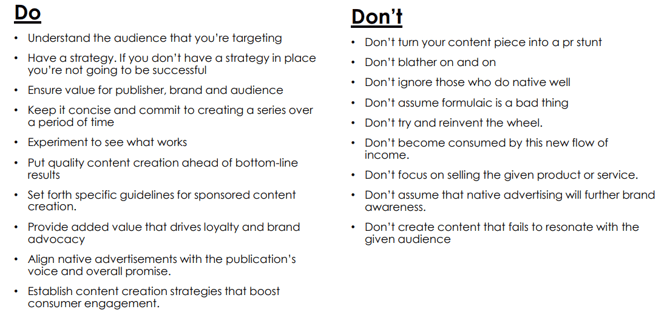
Final Thoughts
Remember, in terms of planning and refining you will need to:
- Map your approach out
- Plan your message. Avoid selling and focus on providing content that is value driven in a manner the audience expects, and always match your content with the coverage of the site you are leveraging
- Ads must be ultra-relevant to the content with which they are paired
- In order for native ads to be most effective, you must have as much end-to-end control as possible. Now having said that, it is important to realize that you will not always have end-to-end control, but note that you ARE in control of the creative, the tracking, the lead capabilities, and ultimately you have the ability to point back to your website.
How to find a site to perform native advertising?
You’ve probably seen native advertising all around you, you just might not be cognizant of it. There are probably industry blogs or sites that you are already frequenting that have native advertising capabilities and opportunities. Take a look and see what they offer.
Finally, there are sites that exist to help make finding native ad opportunities a bit easier. We won't be going over all their offerings here but we made sure to hyperlink two potent tools for you down below.
Is there anything we didn’t cover? Do you have any other questions? Feel free to let us know in the comments and we will be more than happy to follow up!
And as always be sure to check out the links below for more digital marketing insight:

